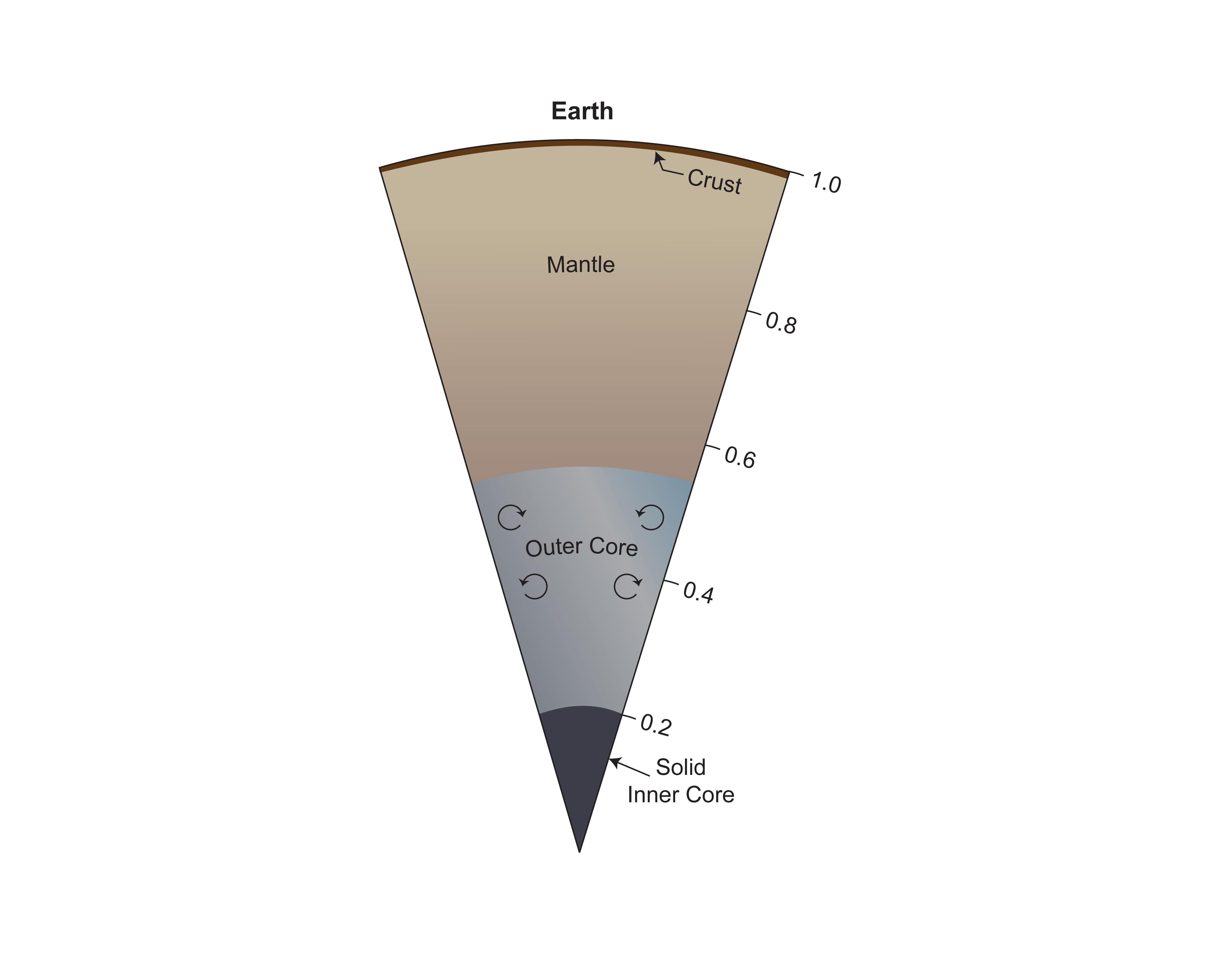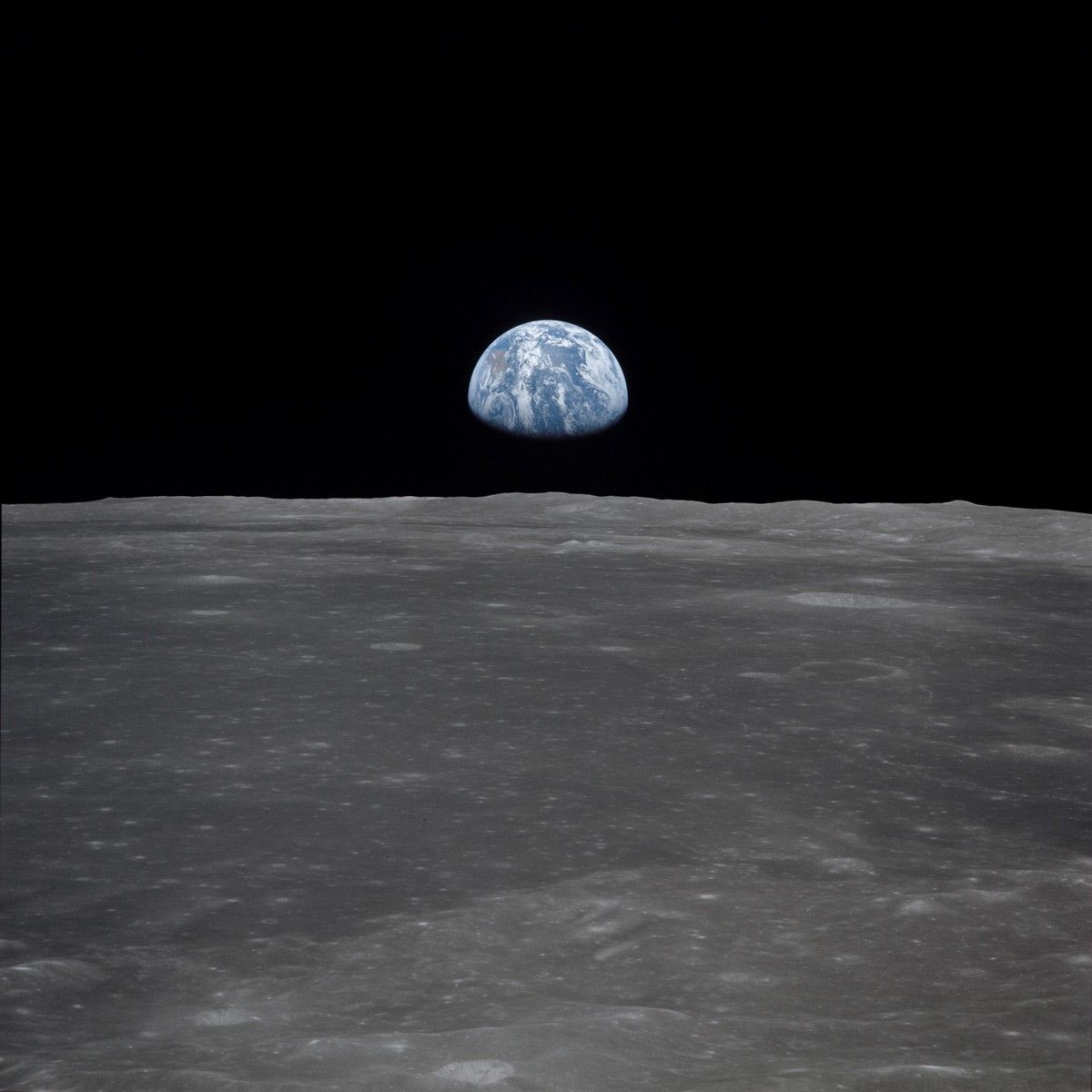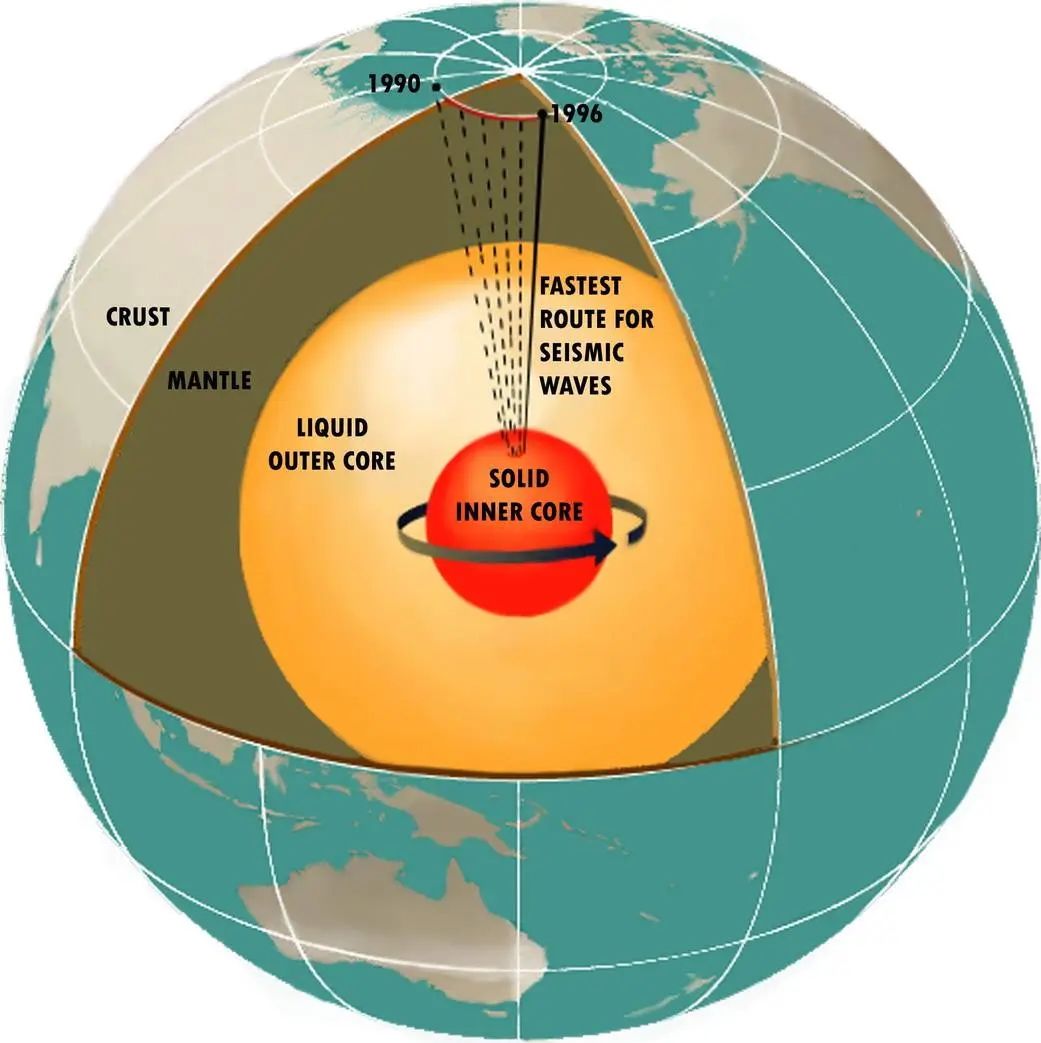The deepest point below sea level that humans have been on our planet is 35,853 feet into the Challenger Deep, part of the Mariana Trench. As deep as that sounds, it’s less than 0.2% of the average distance of 3,959 miles from the surface to the center of the Earth.
The Earth’s core is so far beyond our reach that studying it is challenging. Scientists have to rely on measurements of the shock waves from earthquakes passing through or rebounding off the core to determine what our core is like. Some of their discoveries have completely changed our understanding of what’s going on inside our planet.
7
The Earth’s Core Is Both Liquid and Solid
Is the Earth’s core solid or liquid? The answer is that it’s both. It’s easy to imagine the core being a large ball of molten rock that occasionally escapes to the surface and bursts out of volcanos or seeps from fissures. However, while the outer core is liquid, the inner core at the very center of our planet is solid.
This seems counterintuitive since the temperature increases the deeper you go into the Earth. If the temperature is high enough for the outer core to be liquid, how can the inner core, which is at an even higher temperature, be solid?
The reason is pressure. The pressure also increases as you go deeper into the Earth, and the pressure at the inner core is so high that the melting points of the iron and nickel in the inner core are significantly raised. Despite being hotter, the higher melting point means that the inner core remains solid.
6
We’ve Known About the Inner Core for Less Than 100 Years
If you weren’t aware that the Earth had a solid inner core, don’t feel too bad about it. Humanity has gone almost its entire existence without being aware of the fact. The discovery that Earth has a solid inner core wasn’t made until 1936.
A Danish seismologist called Inge Lehmann was studying measurements of the shock waves from an earthquake in New Zealand. She found that some of the waves were detected in locations that they shouldn’t have reached if the entire core was liquid, and theorized that they must have deflected off a boundary in the Earth’s core. Her explanation was that the core must consist of a solid inner core surrounded by a liquid core.

Related
What Is Earth’s Atmosphere? Everything You Need to Know
There’s a lot more to the atmosphere than meets the eye.
It wasn’t until the 1970s that more accurate measurements led to Lehmann’s theory becoming the accepted scientific consensus, so you could argue that we’ve only really known that the Earth has a solid core for around 50 years.
5
The Inner Core May Be Hotter Than the Surface of the Sun
Despite being solid, the inner core is seriously hot. It’s currently impossible to accurately determine the temperature since it lies more than 3,000 miles beneath our feet, but scientists have estimated that the temperature at the boundary between the inner and outer core could be as high as 5700 K (9800 F).
Bizarrely, this is very close to the estimated temperature of the surface of the Sun. If the inner core gets hotter the deeper you go, then there may be parts of the inner core that are hotter than the Sun’s surface.
4
The Inner Core is Getting Bigger
Earth’s inner core didn’t start off solid. When the Earth was formed, a lot of heat was trapped in the core, and the iron that makes up the majority of the inner core is likely to have been molten. Over time, the core began to cool until it reached the point where the temperature dropped below the melting point of iron at the high pressures in the inner core.
This caused the liquid core to start to crystallize, and over time, more of the liquid cooled to create the solid inner core that currently exists. This cooling process is still taking place, however, with more of the liquid outer core cooling to the point where it falls below the melting point and becomes solid.
The inner core is estimated to be growing by about a millimeter every year. Eventually, the entire core will solidify, and while we don’t have to worry just yet, it will have drastic consequences for our planet.
3
Without Earth’s Core, We Wouldn’t Be Here
The reason that the solidification of the outer core would be so bad is that it would rob us of the vital protection that the liquid core gives to our planet. That’s because the Earth’s magnetic field is generated by the movement of the molten iron in the outer core. Without this process, the magnetic field would become very weak or even disappear altogether.
This isn’t great news for life on Earth. The magnetic field protects the Earth in multiple ways; it shields us from radiation from the Sun, deflects the solar wind that might otherwise strip away our atmosphere, and shields us from the cosmic rays that reach us from the depths of space. Charged particles from the Sun are deflected by the magnetic field, and instead of hitting our planet, they become trapped in two large belts around the Earth known as the Van Allen Belts.
Once the Earth’s core solidifies and the magnetic field becomes weaker or disappears, there will be nothing to stop those charged particles from bombarding the planet. If you want to know how this might work out, just look at Mars. It once had a much thicker atmosphere but lost its magnetic field long ago. Over time, the solar wind stripped much of the atmosphere away, leaving it with an atmosphere about 1% of the density of the Earth’s atmosphere. If this happened on Earth, we’d need far more than sunscreen to protect us. Life on Earth would become unsustainable.
2
The Rotation of the Inner Core May Change Direction
Our planet is spinning on its axis, completing a full rotation every 23 hours and 56 minutes. For a long time, it was assumed that the inner and outer cores also rotated at the same speed. However, the reality may be far more interesting.
According to a paper published in Nature in 2024, the speed at which the inner core rotates is far from constant. There are periods when the inner core is rotating faster than mantle, known as super-rotation. There are other times when the inner core is rotating slower than the mantle, known as sub-rotation.
According to the study, between 2003 and 2008, the inner core super-rotated, and then from 2008 to 2023, it sub-rotated at a slower rate. This means that around 2008, the rotation slowed to match the speed of the mantle and then started moving more slowly than the mantle. If you imagine a point on the inner core, this means that relative to the mantle, this point would have been moving ahead in one direction, then stopped, then begun to move back in the other direction towards its original position.
There is a slightly bizarre outcome if this is the case. Ignoring external forces, by conservation of angular momentum, if the inner core is spinning faster, the mantle must spin more slowly. When the inner core slows down, the mantle must spin a little faster.
If the surface of the Earth spins faster or slower, this means that our day gets ever so slightly longer or shorter. The changes would be barely noticeable, however, making the length of a day change by a tiny fraction of a second.
1
The Inner Core Is Changing Shape
The inner core is rotating and slowly growing, but a recent discovery seems to indicate that it is also changing shape. A 2025 study published in Nature took measurements of seismic waves from earthquakes and analyzed the results at times when the inner core was in the same position, which would discount the effects of the changing rotation rate.
The results still showed changes in the measurements, and the proposed explanation is that these changes are due to the deformation of the inner core at the boundary with the outer core, as the shape of the inner core changes. One theory is that the flow of the outer core leaves impressions on the inner core, much as the sea leaves ridges and troughs in the sand beneath. What impact these changes to the inner core’s shape might have on our planet is still to be determined.
Living on the surface of the Earth, it’s easy to forget about the thousands of miles of planet that lie beneath our feet. In fact, the distance from where you’re standing to the center of the Earth is about the same as it is to fly from New York to Sweden.
With the Earth’s core being so remote, there’s still a lot we don’t know about it. However, scientists continue to learn more and more about what’s happening in the core of our planet, and the results are often a lot more interesting than we might have expected.









